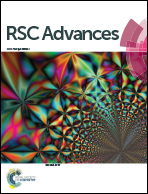Aggregation of retained helium and hydrogen in titanium beryllide Be12Ti: a first-principles study
Abstract
Titanium beryllide, Be12Ti, has been proposed as a prospective neutron multiplier in fusion reactors. First-principles calculations have been performed to investigate the nucleation mechanism of a He bubble in bulk Be12Ti. Meanwhile, the influence of the presence of H atoms on the nucleation of the He bubble, i.e., the synergistic effect of He and H atoms, has also been investigated. It has been found that the He bubble will initially nucleate around a monovacancy (VBe2). When more He atoms have been implanted, two newly induced vacancies (VBe1 and VBe3) could be successively observed. The nucleation of the He bubble will occur around the divacancy of VBe2VBe1 and the trivacancy of VBe2VBe1VBe3. Dumbbell structures in the He bubble evolve with the number of implanted He atoms and finally disappear. The presence of H atoms will significantly influence the nucleation of the He bubble. It is interesting that some tetrahedral and octahedral structures have also been observed. The maximal number of H atoms trapped by a He bubble has been obtained. These phenomena could be further explained by the continuous shrinking of the isosurface of charge density. The present results provide a microscopic physical foundation to understand the mechanism of He and H atoms retention in neutron multiplier materials. This investigation could be helpful for the design and fabrication of more promising beryllides which could withstand a severe external environment.



 Please wait while we load your content...
Please wait while we load your content...